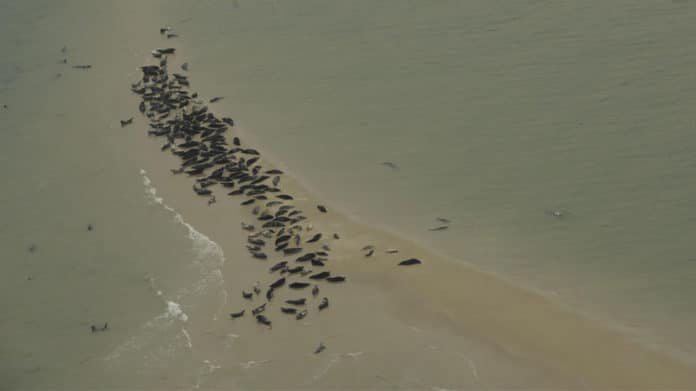Seals are essential sentinels for the state of the ecosystem. Many ecological studies rely on count data and involve manual counting of seals, which is time-consuming. Plus, those methods are disadvantageous when time in the field or lab is limited—an increasing number of works, which use digital imagery, which opens opportunities to automatize counting tasks.
In a new study, scientists at EPFL, the Royal Netherlands Institute for Sea Research, and Wageningen University & Research have developed a new deep-learning model to count several seals in aerial photos that is considerably faster than doing it hand.
The model is based on deep-learning algorithms. It could run through 100 images in less than one minute.
What’s more, their method can be used to count any items or individual animals. In this way, it potentially helps to process the new photos and those that could not be analyzed for lack of time.

Jeroen Hoekendijk, a Ph.D. student at Wageningen University & Research (WUR) and employed by the Royal Netherlands Institute for Sea Research (NIOZ), said, “In ecology, the most commonly employed deep-learning models are first trained to detect individual objects, after which the detected objects are counted. This type of model requires extensive annotations of individual objects during training.”
“However, the method applied by the research team eliminates the need to label individual seals beforehand, dramatically speeding up the procedure since only the total number of animals in the picture is needed.”
In the future, scientists are planning to apply similar approaches to satellite images of inaccessible Arctic regions.
Devis Tuia, an associate professor and head of the Environmental Computational Science and Earth Observation Laboratory at EPFL Valais, said, “We plan to use this approach to study endangered species in this remote part of the world, where temperatures are rising twice as fast as elsewhere on the planet. Knowing where the animals concentrate is essential to protect these often-endangered species.”
Journal Reference:
- Hoekendijk, J.P.A., Kellenberger, B., Aarts, G. et al. Counting using deep learning regression gives value to ecological surveys. Sci Rep 11, 23209 (2021). DOI: 10.1038/s41598-021-02387-9
